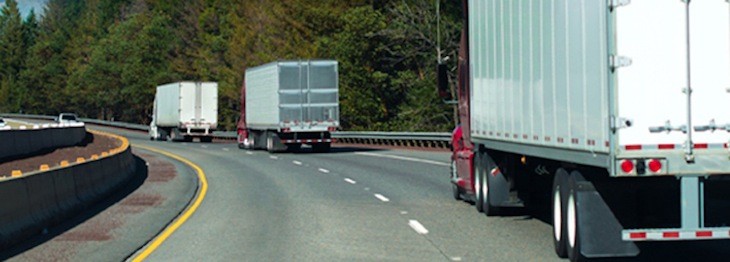Trucking economist: Economy slowing, but growing
by May 16, 2019 11:29 am 749 views

The economy isn’t growing as fast as it was, but it’s still growing, and a recession may not occur until 2021 or even later, the American Trucking Associations’ chief economist and senior vice president said Wednesday (May 15).
Speaking at the Arkansas Trucking Association Business Conference & Vendor Showcase in Little Rock, Bob Costello told attendees that the economy is “slowing but we’re still growing.”
“We are heading back to trend,” he said. “For the macroeconomy, what is trend? It’s about 2% GDP growth.”
The economy will soon reach the longest expansion in modern American history, but Costello does not expect a recession until 2021 or later.
“Economic expansions do not die of old age,” he said. “They don’t. They’re usually murdered” – by a bubble or by the Federal Reserve raising interest rates too much before it realizes the economy is slowing. But the Fed has said it is pausing interest rate hikes.
“Really, you know, I think we’re in a decent spot,” he said. “It’s not going to be 2018, but it’s certainly not going to be terrible, either.”
The economy grew at an annual rate of 3.2% in the first quarter, but Costello said it was “the worst 3.2% you could get” because part of the growth came from inventories being stockpiled in anticipation of a trade war.
Remove that factor, and the gross domestic product actually grew 1.9% that quarter. Costello predicted growth of less than 2% in the second quarter and then around 2% going forward.
The inventory-to-sales ratio fell from 1992 until the Great Recession as the supply chain became more efficient, then grew to a peak in 2016 which led to a freight recession, and has since fallen.
But inventories are still higher than they were during that long decline and he does not expect them to fall that low again. That’s because the supply chain needs larger inventories to provide fast deliveries for e-commerce purchases.
E-commerce is also having an effect on the length of hauls. The average dryvan truckload haul has fallen from 796 miles in 2000 to 507 miles in 2018, a drop of 36%. That reduction will affect driver pay, truck purchasing cycles, and profitability.
Meanwhile, two of the three drivers of freight, the consumer and manufacturing sectors, are doing well. The economy has been creating more than 212,000 jobs a month over the last 12 months while the population that goes into the job market only grows about 60,000 a month. For two years, the economy has had more job openings than unemployed people. Costello expects job gains to moderate to 150,000 a month. The unemployment rate in April was the lowest level since December 1969.
“This screams to me full employment,” he said.
Meanwhile, factory output remains high, though growth in 2019 is slowing to 1.5% from 2.7% in 2018. He said he is bullish on U.S. manufacturing, but domestic producers will focus on high-value, high-end products, and their operations will be automated. Cheap “trinkets” will be made with foreign labor.
The third freight driver, housing and construction, has been “my one disappointment,” he said. He expects 1.23 million new homes to be constructed this year, a number that is dropping from previous years.
He attributed the decline to rising mortgage rates, an inadequate supply of real estate property, and the millennial generation’s lack of enthusiasm for buying homes.
Costello said a trade war with China is what keeps him awake at night. He also said Congress should ratify the United States-Mexico-Canada Agreement, President Trump’s negotiated replacement of NAFTA. Failure to do so jeopardizes the nearly $13 billion in trucking revenues that come with cross-border trade with Canada and Mexico.
He said while “90%” of the agreement is the same as NAFTA, it is a better deal for the United States. But Democrats in Congress are leery of handing Trump a major victory.
“I think there’s a 50-50 shot, but we have a very tight window to get this done,” he said. “If this is not done by the end of October, I think the path forward is very difficult.”
Costello said freight fundamentals are not as good as last year, which was arguably the best year since the trucking industry was de-regulated in 1980. Average revenues per mile for for-hire truckload carriers increased 5% year-over-year in the first quarter after experiencing 17-18% year-over-year growth last year.
Trucking capacity increased because fleets gave pay raises, shippers became more efficient, and the industry adjusted to the federal government requiring fleets to install electronic logging devices. The driver shortage will continue to be a major issue, but it’s mainly a problem for over-the-road, for-hire truckload carriers.
Meanwhile, large truckload carriers are moving toward company-owned assets. In 2017, company-owned tractors increased 5.9%, while independent contractors fell 4.8%. The change is the result of the legal risk of hiring independent contractors in the “people’s republic of California,” he said.
One other issue is the flood of asylum seekers at the southern border, which is taking Border Patrol officers away from trade routes, slowing the movement of freight.
